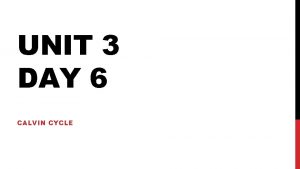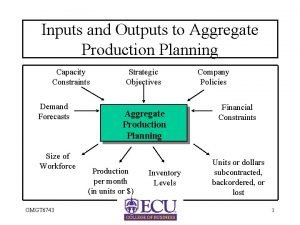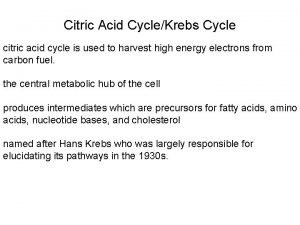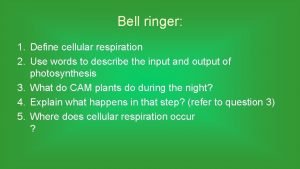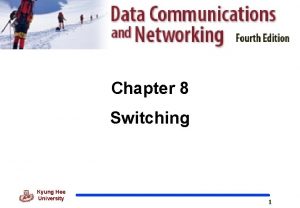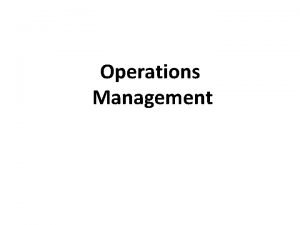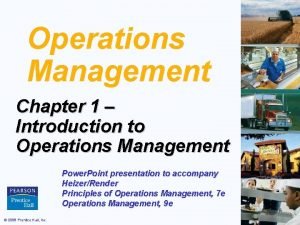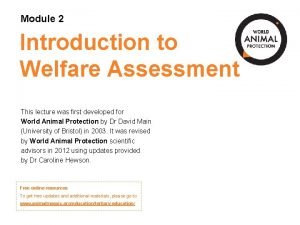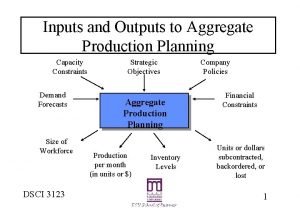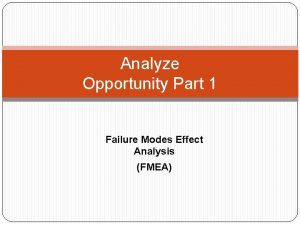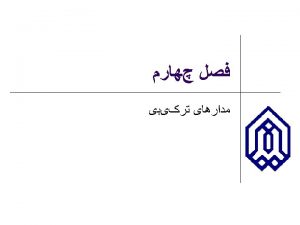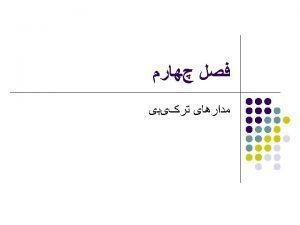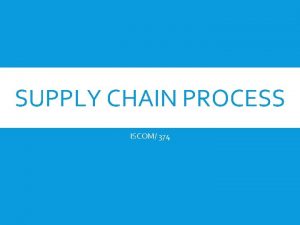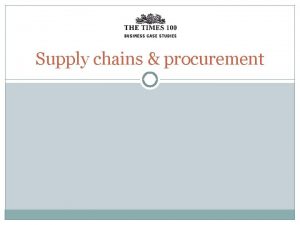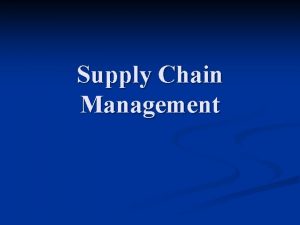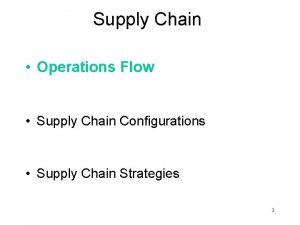Chapter 9 Process Inputs and Outputs Supply Chain













- Slides: 13

Chapter 9. Process Inputs and Outputs: Supply Chain Management z. Outline y. The Supply Chain y. Suppliers Decision Making y. Transportation Decision Making y. Inventory Decision Making x. External or independent demand x. Internal or dependent demand MAN 3504 - Chapter 9 1

Supply Chain Management z Area of emphasis in the 1990’s - opportunity for improvement is high z Important due to the continuous globalization of the transformation processes MAN 3504 - Chapter 9 2

Supplier Decision Making z. Suppliers play an important role as mentioned in the Quality Chapter z. Therefore, supplier selection must consider y. Quality y. Vision/strategy alignment yand obviously price z. Supplier certification programs z. Supplier decisions: one versus multiple MAN 3504 - Chapter 9 suppliers 3

Transportation Decision Making z. Type of transportation method y. Air, Ship, Rail, Truck z. Priority/”urgency” of the shipment y. Dedicated transport y. Consolidated transport z. Transportation decisions based on value density y$/Weight or $/Volume z. Another factor: customs MAN 3504 - Chapter 9 4

Inventory Decision Making z. Inventory is necessary y. To maintain a continuos flow (minimize idle time) y. To balance operations y. To separate the production system from the customer y. Cost reduction trough bulk purchases z. Multiple inventory points z. Inventory categories - Chapter y. Raw materials MAN : : 3504 Work in 9 process : : Finished 5

Inventory Decision Making Inventory in a simplified system MAN 3504 - Chapter 9 6

Inventory Decision Making z. Inventory Costs y. Holding Costs: These costs include the cost of money (discussed above) plus the costs related to storage (for example the depreciated costs of the warehouse + warehouse operating expenses), handling, insurance, obsolescence, and “loss”. y. Ordering Costs: These costs include the processing of an order (clerical work) plus the cost of inspection, verification of quantities, and initial handling. y. Shortage Costs: These are the costs associated with not having material when it is required. These 3504 -lost Chapter 9 7 costs include lost MAN sales, customers, or lost

Inventory Decision Making - External Demand z. Inventory systems for finished goods required by consumers z. Determine: y. How much to order. y. When to order. z. Several methods exist - we will cover one of the most frequently used, the Fixed Order Quantity Model. y. Assumed to reorder quantity Q is fixed - question MAN 3504 - Chapter 9 8 1

Inventory Decision Making - External Demand z. Fixed Order Quantity Model assumptions · Yearly demand (D) for the item is known and it is constant, meaning every period (I. e. day, week, . . ) the same amount (q) is consumed from inventory. · The cost per order (Co) and the opportunity cost/ cost of money I is fixed and known (a percentage). · Known and constant lead time (L) to receive Q. · Q/2 is the average inventory · Ci is the cost of the item MAN 3504 - Chapter 9 9

Inventory Decision Making - External Demand z. Fixed Order Quantity Model Equations y Annual Ordering Cost (AOC) = D/Q * Co y Annual Holding Cost (AHC) = Q/2 * Ci * I y Annual Purchase Cost (APC) = D * Ci y Total Inventory Cost (TIC) = Annual Ordering Cost + Annual Holding Cost y Total Cost (TC) = TIC + APC y The optimal ordering quantity is the point of lowest TIC. Qoptimal = Sqrt [ D * Co )/( Ci * I ) ] y The reorder point R=L*q MAN 3504 - Chapter 9 10

Inventory Decision Making - External Demand z. Fixed Order Quantity - Discounts y. Used to compare multiple options - quantities or suppliers. Note that it only considers cost. y. For each alternative: • Calculate Q optimal using the discount parameters • IF Q optimal meets the minimum required for the discount, then set Q = Qoptimal and go to #4. • If Q optimal does not meet the minimum required, set Q = minimum quantity that qualifies for the discount. • Compare all options for total cost MAN 3504 - Chapter 9 11

Inventory Decision Making - Internal Demand z. Inventory systems for raw materials and WIP - required by the transformation process z. Determine (same as before): y. How much to order y. When to order z. Known as Materials Requirements Planning z. Main limitation is that it assumes unlimited MAN 3504 - Chapter 9 12 capacity and constant lead times

Inventory Decision Making - Internal Demand z. MRP Systems is a process that requires component information y. Product structure y. Production/Supply lead time y. Lot size if any y. Available inventory MAN 3504 - Chapter 9 13
 What are the inputs to and outputs of a supply chain
What are the inputs to and outputs of a supply chain Inputs and outputs of calvin cycle
Inputs and outputs of calvin cycle Design input vs design output
Design input vs design output Input of mrp
Input of mrp Acid
Acid Krebs cycle input and output
Krebs cycle input and output What are the 5 major senses in human computer interaction
What are the 5 major senses in human computer interaction In a banyan switch for 8 inputs and 8 outputs we have
In a banyan switch for 8 inputs and 8 outputs we have Water cycle inputs
Water cycle inputs Inputs outputs transformation processes and feedback
Inputs outputs transformation processes and feedback Collins title productivity
Collins title productivity Welfare inputs and outputs
Welfare inputs and outputs Aggregate planning inputs and outputs
Aggregate planning inputs and outputs Fmea inputs and outputs
Fmea inputs and outputs

